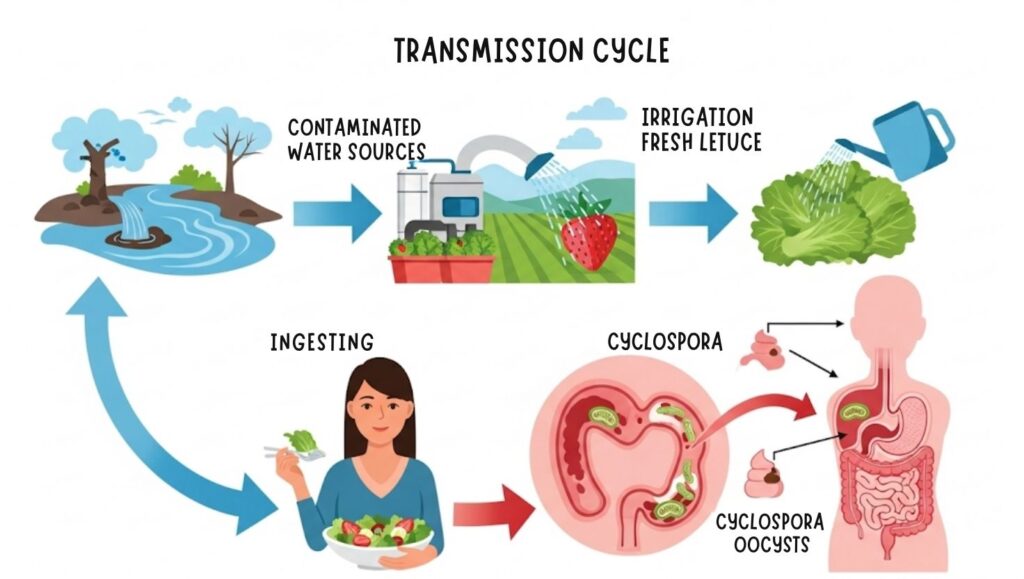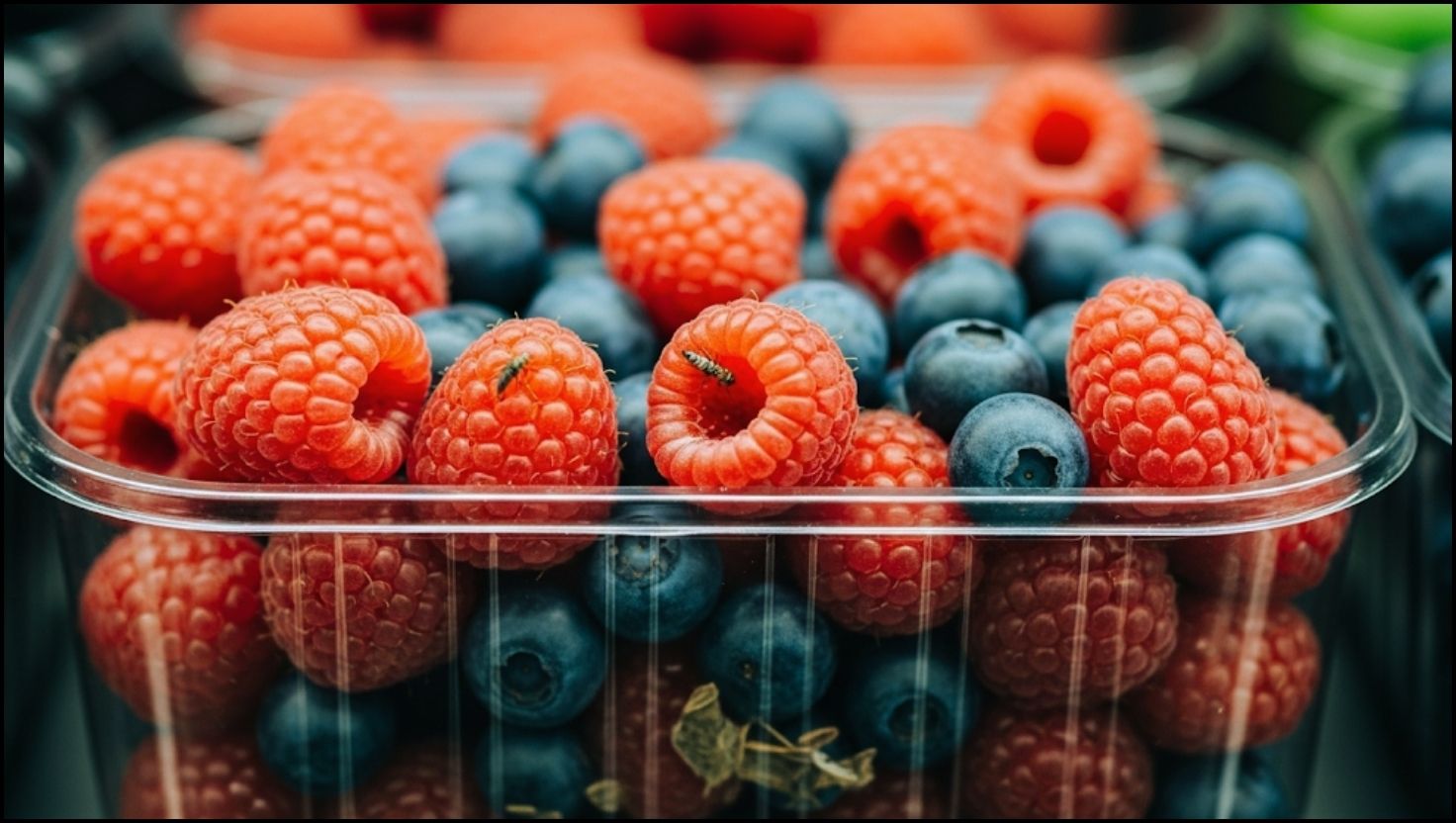Public health officials are issuing renewed warnings about a significant, often overlooked danger of snacking on fruit straight from the container: microscopic parasites. While many consumers worry about pesticides, experts say the more immediate risk of eating unwashed berries comes from foodborne pathogens like Cyclospora, which can cause severe gastrointestinal illness and have been linked to multiple recent outbreaks across the United States and Canada.
The Growing Concern Over Cyclospora and Produce Contamination
The primary culprit in many recent produce-related illnesses is Cyclospora cayetanensis, a single-celled parasite invisible to the naked eye. According to the U.S. Centers for Disease Control and Prevention (CDC), infections are most common in spring and summer months and are frequently linked to the consumption of contaminated fresh produce, including berries, herbs, and leafy greens.
“Contamination can happen at any point in the supply chain, from contaminated irrigation water on the farm to handling during packaging and transport,” said Dr. Benjamin Chapman, a professor and food safety specialist at North Carolina State University. The parasite is shed in the feces of an infected person, and if it contaminates water or soil, it can be transferred to produce.
In recent years, the U.S. Food and Drug Administration (FDA) and the CDC have investigated numerous multistate outbreaks of cyclosporiasis. A 2024 investigation, for example, linked cases in multiple states to fresh basil, while past outbreaks have been tied to raspberries, cilantro, and bagged salads. The CDC notes that symptoms of cyclosporiasis, which can begin a week or more after consuming the contaminated food, include watery diarrhea, loss of appetite, cramping, bloating, and fatigue, an illness that can last for weeks if not treated with antibiotics.

Why Berries Are Particularly Vulnerable
The very qualities that make berries appealing also make them effective vehicles for contaminants. Their delicate, often bumpy, and porous surfaces provide microscopic hiding places for pathogens like Cyclospora. Unlike a smooth-skinned apple, which can be scrubbed, the texture of a raspberry or blackberry makes effective cleaning more challenging.
“The structure of these berries, with their many small drupelets, creates a large surface area where contaminants can adhere,” explained a food scientist in a report from the University of California’s Division of Agriculture and Natural Resources. This structure makes it difficult for a simple rinse to dislodge microscopic organisms.
Furthermore, the modern global supply chain contributes to the produce contamination risk. Berries sold in a U.S. supermarket may have been grown in Mexico, Central, or South America, harvested by hand, packaged in the field, and transported thousands of miles. Each step presents an opportunity for contamination, making on-farm safety practices and proper consumer handling critical for preventing illness.
Bacterial and Viral Threats
While Cyclospora outbreaks have drawn significant attention, they are not the only concern. Berries have also been implicated in outbreaks of other serious foodborne illnesses.
- Hepatitis A: A 2022 outbreak was linked to imported fresh organic strawberries, leading to hospitalizations across several states and a subsequent recall.
- Norovirus: Known for causing projectile vomiting and diarrhea, norovirus is highly contagious and can be spread to produce by infected food handlers.
- E. coli and Salmonella: These bacteria can also contaminate berries through contact with tainted water or animal waste.
This array of potential pathogens underscores the importance of treating all berries, whether conventional or organic, as a potential source of food safety concern.
Official Guidance: How to Safely Consume Berries
Despite the risks, health experts emphasize that consumers should not avoid these nutrient-rich fruits. Instead, they should adopt rigorous handling practices. The FDA recommends a simple, effective method for reducing the risk of eating unwashed berries.
“We do not recommend using soap, detergent, or special produce washes,” an FDA advisory states. “Gently rub produce while holding it under plain running water. For berries, place them in a colander and spray them with cool, running water.”
After washing, the FDA advises drying the berries with a clean cloth or paper towel. This can further reduce the presence of any lingering bacteria. It is also crucial to wash your hands with soap and water for at least 20 seconds before and after handling fresh produce. Experts stress that no washing method is 100% effective, but these steps significantly reduce risk.
The issue of produce contamination is a persistent challenge for the global food industry. Regulatory agencies like the FDA continue to work with international partners to strengthen safety standards from farm to table. However, officials maintain that the final line of defense is the consumer. As Dr. Chapman noted, “The single most effective step a consumer can take is to wash their produce under running water. It’s a simple action that can prevent a very unpleasant illness.”
Drinking Sugar May Pose Greater Health Risks Than Eating It, New Research Suggests


 How Quick Air Fryer Meals Are Reshaping the American Kitchen
How Quick Air Fryer Meals Are Reshaping the American Kitchen A Depression-Era Staple, Southern Tomato Gravy, Finds New Life in Modern Kitchens
A Depression-Era Staple, Southern Tomato Gravy, Finds New Life in Modern Kitchens Why a Forgotten 1950s Cake with a Secret Ingredient Is Trending Again
Why a Forgotten 1950s Cake with a Secret Ingredient Is Trending Again More Than a Dessert: How Tar Heel Pie Captures the Essence of North Carolina
More Than a Dessert: How Tar Heel Pie Captures the Essence of North Carolina